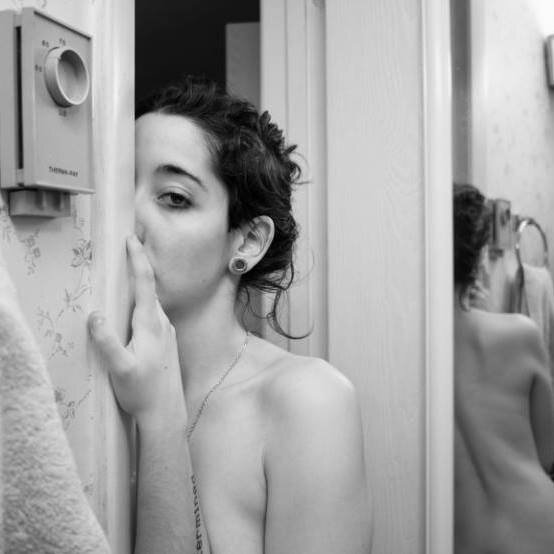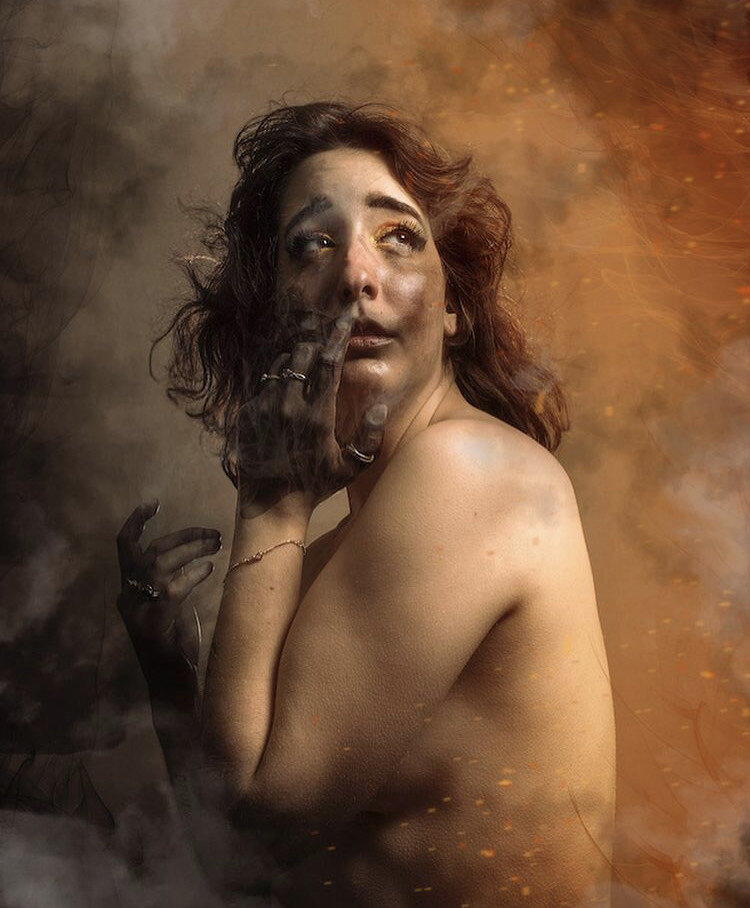Encounter: Jacquelin Grace Corti and Jim Peters
This month the main gallery features artists invited by Fountain Street core members. The exhibition Encounter runs through December 20th and can be viewed during gallery hours on Saturday and Sunday from 12–4PM, as well as by appointment.
There will be a Virtual Artists Reception and Tour on Saturday, December 19th from 3–4PM. To attend please RSVP by 2:30PM the day of the event.
Jacquelin Grace Corti
Below Core Artist Rebecca Skinner Introduces invited artist Jacquelin Grace Corti.
When I was a teenager Jaqueline’s family was a very important part of my life, they were like family. I moved to North Carolina when I was seventeen and over time we lost touch, but I always held them close to my heart. Several years ago, I started following Jaqueline’s work when I had heard she was a photographer. I was close with her older sisters when I was a teenager, but have never met Jaqueline in person. Looking at her photography I feel like I knew her. She has a striking resemblance to her mother.
At first sight I had a strong emotional connection to the work. Jaqueline's portraits are expressive and powerful, and at times uncomfortable. If you know me, I love the uncomfortable! There is a familiarity to the discomfort and loneliness in some of her work that draws me in and reminds me of my younger self.
In Jaqueline's work I see a fresh, excited, and passionate photographer who is not concerned with boundaries. I have enjoyed watching her evolve over the past few years. She is at the beginning of her journey and is going strong. I was honored to invite her to exhibit at Fountain Street, a gallery that has helped me grow so much as an artist.
Jim Peters
Below is a conversation with core artist Kathline Carr and invited artist Jim Peters.
Iteration and Freeze-Frame: Capturing the Intimate Moment
The artist I’ve invited to the Encounters exhibit is my husband Jim Peters, figurative painter/constructionist. After shifting away from a career in nuclear physics, Jim attended Maryland Institute College of Art (1975-77), earning an MFA in painting. While living in Uncasville CT, painting murals in President Carter's CETA Project, he was awarded two fellowships at the Fine Arts Work Center in Provincetown (1982-84). Afterward, he served as visual coordinator and visual chair for many years. His work is in many public and private collections, including the Guggenheim Museum in NYC. Jim currently lives and works in North Adams MA (with me, our teenage daughter and two cats) and teaches at RISD in Providence and Greenfield Community College. I’ve asked him a few questions about his work and process. Encounters is on view through December 20, 2020. More information can be found on his website, www.jimpetersart.com.
KC: How does your background in science influence your painting?
JP: My background in science is in the areas of atomic and nuclear physics and nuclear engineering. I received a BS in Atomic Physics from the Naval Academy and a MS in Nuclear Engineering from MIT. What I loved and learned in these studies was the “process” of scientific experimentation, of how one goes about solving problems, the idea of building an experiment, the possibility of failure, and then moving forward to the next step...iteration. It’s a parallel to art-making. My paintings are not abstracted non-representational paintings, evolved from working of electrons or nuclei. That’s not what I’m interested in, image-wise. It's about the process...a way of passage through ideas, the way JJ Thompson and Ernest Rutherford were working, the “garage” physics of the late nineteenth century, at Cambridge (England), working with banks of batteries, learning about the interior of the atom.
KC: You mention that you think of your paintings as films in your statement, can you expand on that?
JP: Film is primarily a narrative art form, and I think of my paintings as narratives, in motion. I keep iterating, working out of my imagination.... I do not use photos or models... therefore it keeps changing. Everyday I go to the studio, it’s a different kind of experience; it may be a different feeling or mood. Because I have no fixed source, the painting keeps changing, figures come and go, the space is altered...until I get what I want. Then, BANG, I stop, a Truffaut “freeze frame.”
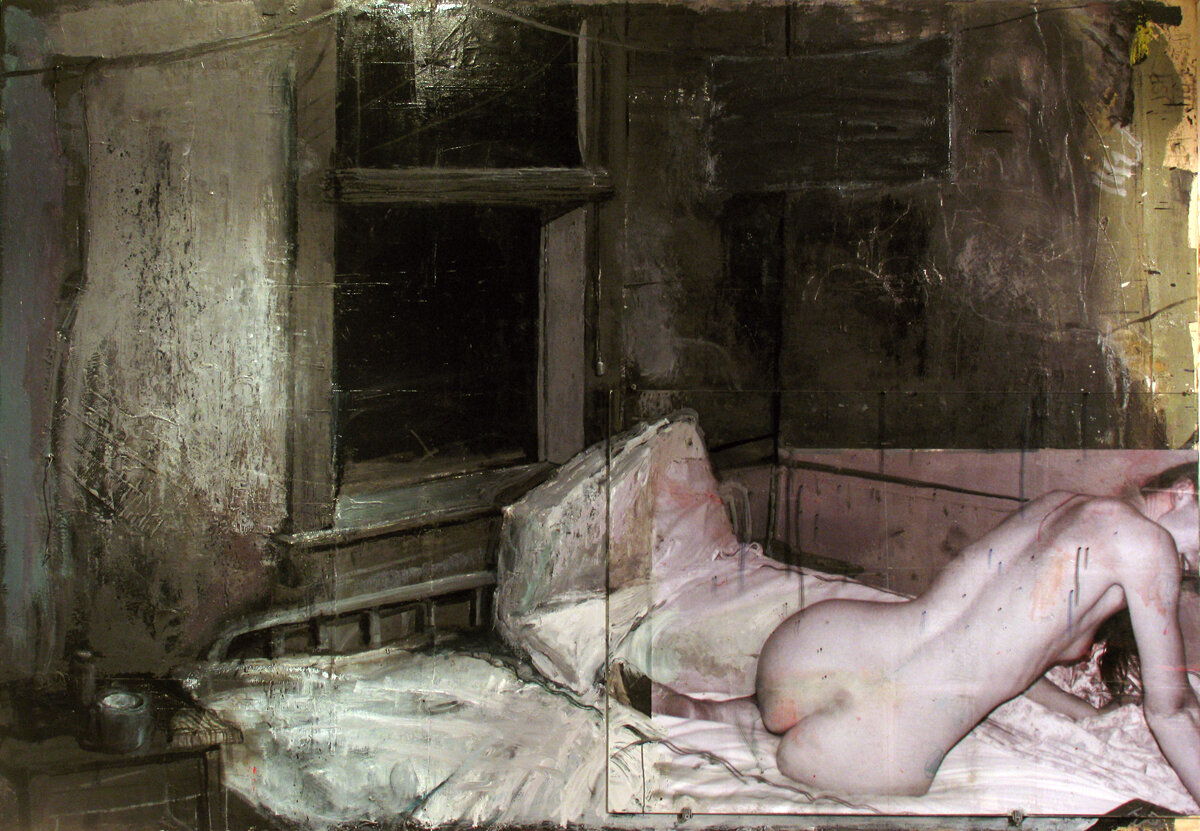
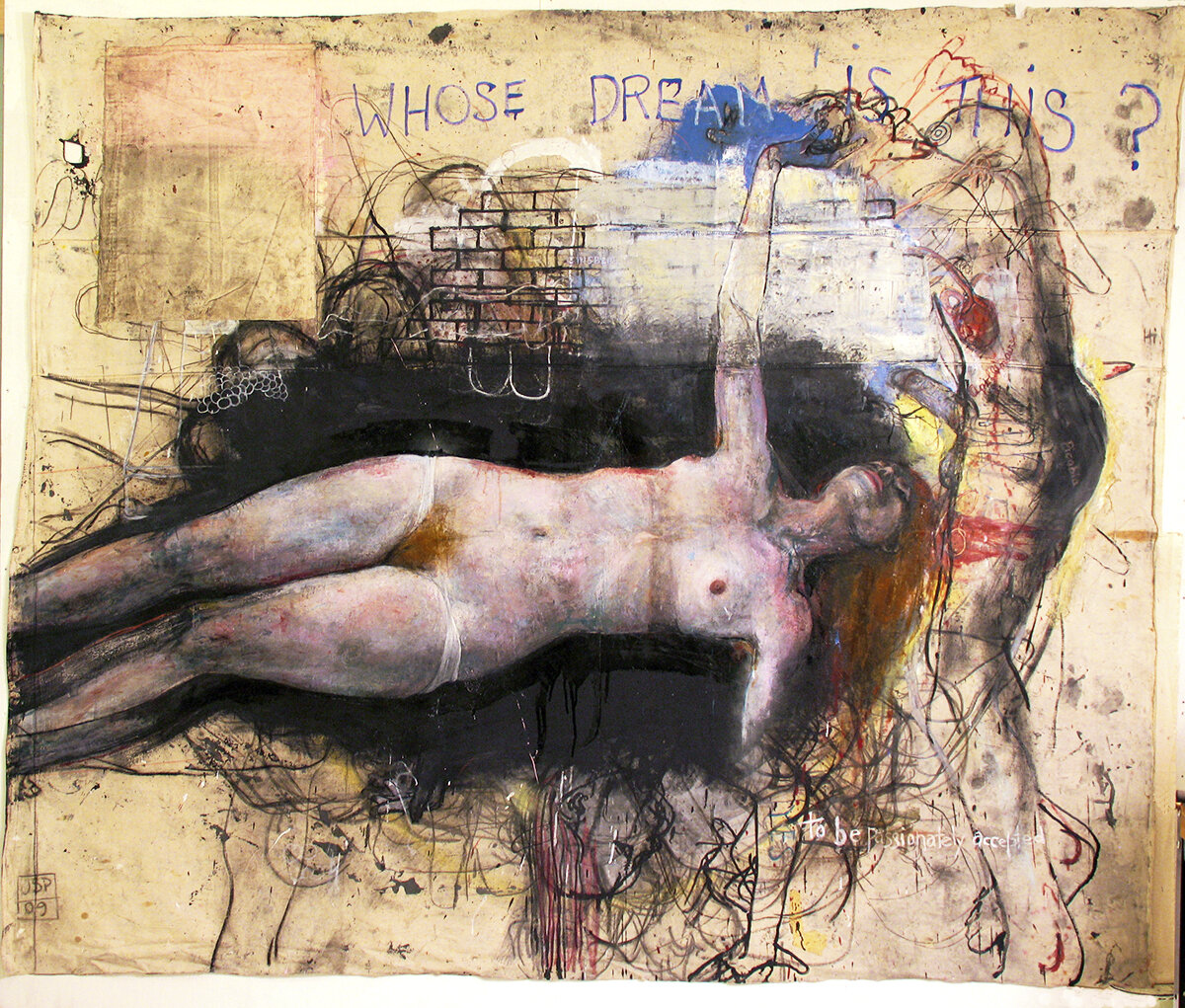

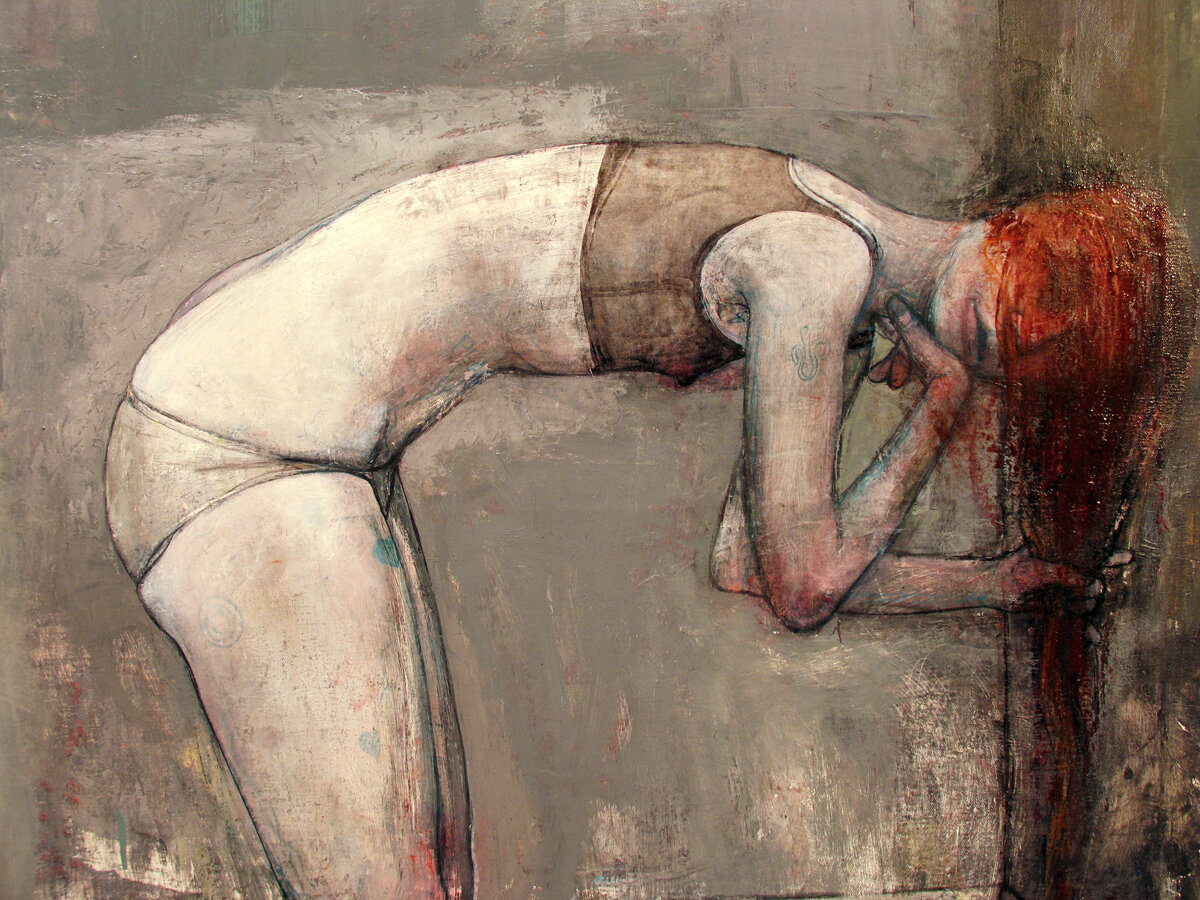
KC: What is the backstory of the painting in the current exhibit [Encounter: Invitational at Fountain Street Gallery], Bath in Pau? How does this painting relate to your paintings, in style, in methodology, and/or generally?
JP: Bath in Pau is actually the first painting I did of you. Like all my work it went through several changes from a standing figure in a library, to the introduction of a male figure with interaction between figures, and finally to female bending forward washing her hair in a primitive bathroom with hose and pail. I have a passion for old castles, finding and haunting many in France and England. I have never been to Pau in the Pyrenees (southern France) area, so in my mind you and I went there to look for Cathar castles and you were washing your hair.
When I was painting Bath in Pau, I was visiting the Fogg Museum at Harvard and was impressed again by the Ingres figure studies – his amazing narrow-range tonal painting projected by his fine delicate but confident line. These influenced how I worked the figure in Bath in Pau.
KC: How do the figures in your paintings communicate their stories to you, and how would you hope they speak to us?
JP: Painting space, a location, primarily an interior and populating that space with figures is what I love to do. I like working large from 4’x 5’ to 6’ x 8’. I feel the space is very much a part of the narrative, from cramped small rooms that force an intimacy on the figures, to large, open empty rooms, as in Bath in Pau, which promote a kind of vulnerability or pregnancy or expectation. The figure(s) react to the space, then the space alters to accommodate the figure or figures and the iterative process proceeds. All this because I have no predetermined source, just responding to the needs of the painting and my desires for human emotion.
Though when I paint I do not use sources like models or photos, I have been experimenting with the inclusion of large photographs in my “paintings,” not as collage but remaining as photographs, glassed and not fixed to the canvas (see image Black Window, 50”x70”).
KC: What is a typical day in your studio like?
A day in the studio – every day is a battle, a struggle/challenge to balance my needs and the needs of the painting. It's a dialogue between me and the surface, the image – between my stubbornness and the paint’s ability to surprise! I really enjoy altering, changing a painting, as much as finalizing a piece (that itself is a conceit, as Cezanne is quoted: “a painting is never finished, only abandoned”).
KC: What inspires you as an artist, feeds your creativity?
What inspires me? Everything, life, my experiences, my desires, my relationship with you. Also I love to look at art, painting. I am inspired by how other artists make images, artists like Picasso, Diebenkorn, Louise Bourgeois, Utamaro, Marlene Dumas to name a very few. And closer to home, your work! It’s inspiring to have a studio-mate, to see another’s process and ideas in flux. Perhaps my favorite artist is Bonnard; his body of work creates a sense of a “domestic sensuality,” the history of an intimate relationship. I am in that sense a voyeur, I love and am inspired by and through the art, the creations of others.

